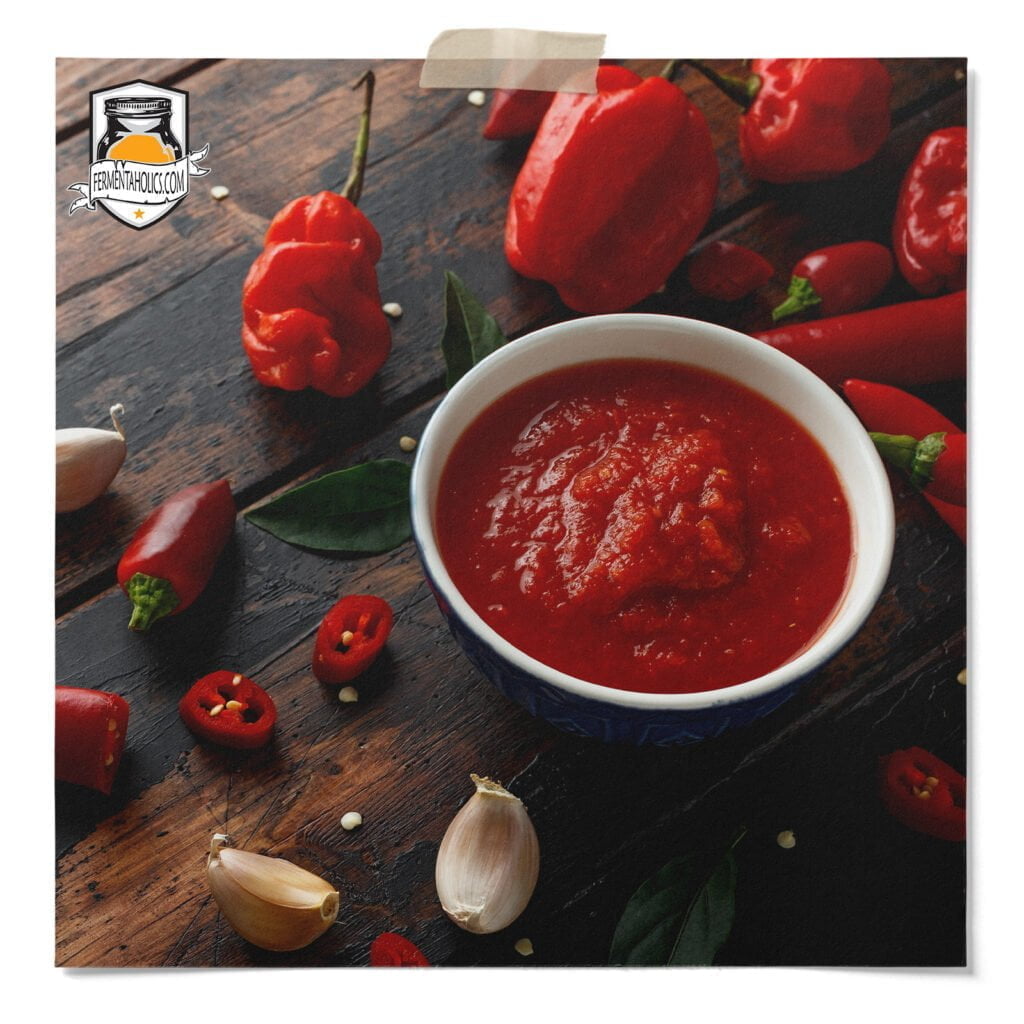
Hot Sauce is a popular condiment that is a focal ingredient in many meals across the world. Humans have been utilizing the Chili Pepper plant as a staple in diets and cuisines as far back as 7,000 B.C. As times have changed hot sauce recipes have been modified for all palates. Whether you crave sweet, mild, or spicy flavorings there is a delicious hot sauce for you!
Fermented foods like hot sauce are full of health benefits and probiotics. Studies have found that it is a great source of probiotics such as lactic acid bacteria which are linked with many health benefits. Harvard even noted that fermented foods have been linked to improved heart health as well as better digestion.
Fermentation is the process by which bacteria and yeast consume sugars, digest them, and transform them into byproducts such as alcohol, organic acids, and gases. Although there are many different forms of fermentation, the one taking place in this recipe is lacto-fermentation. Lacto- fermentation is performed by a group of bacteria called lactic acid bacteria (LAB). This produces lactic acid, which is most famous for cheesemaking due to its ability to process lactose, aka milk sugar.
The process of making fermented foods like hot sauce and pickles begins when the vegetables are submerged in salt water. One of the best ways to make sure your vegetables stay submerged is with glass fermentation anchor weights. LAB is already present on all plant matter, especially those that grow close to the ground, which makes the fermentation process easy for all vegetables. This process also creates enzymes and vitamins that make nutrients more bio-available in your body. Lacto-fermentation has been around as long as humans have been preserving food and is the reason we have classics in global cuisines like sauerkraut, kimchi, sourdough, and so much more! Be sure to check out our other fermented food guides, like our traditional sauerkraut recipe.
32 Oz Jar
15
Minutes7-14 Days
This Chili Pepper Hot Sauce recipe is for one 32 oz jar. For a larger batch, scale this recipe by multiplying the ingredients or toggle the serving size above.
1 Pound Chili Peppers
4-6 Cloves Garlic
1 1/4 TSP Salt
1 Shallot
3.5 Cups Water
1 TSP Apple Cider Vinegar
1 Quart Mason Jar
Large Bowl
Food Processor
Clean and chop the peppers and put them into the mason jar (Make sure to get rid of the stems.)
Mix water and salt into the bowl and then pour it over the peppers into the mason jar.
Add the chopped garlic cloves and shallot into the jar. Weight down your mixture with our Glass Anchor Weights.
After waiting at least 7 days, you should notice the lactic acid fermentation should have taken place.
Separate your chili mixture from the liquid, dumping the mixture into a food processor. carefully puree this mixture until it is velvety red. Add in some of the remaining liquid and continue pureeing. ( The more liquid you add will create a more liquidy consistency.)
Add the apple cider vinegar to the mixture. This will increase the acidity of your hot sauce and make it last longer.
